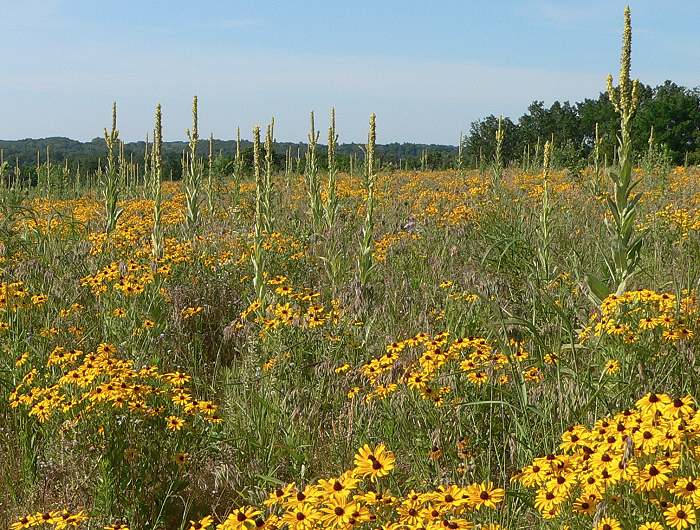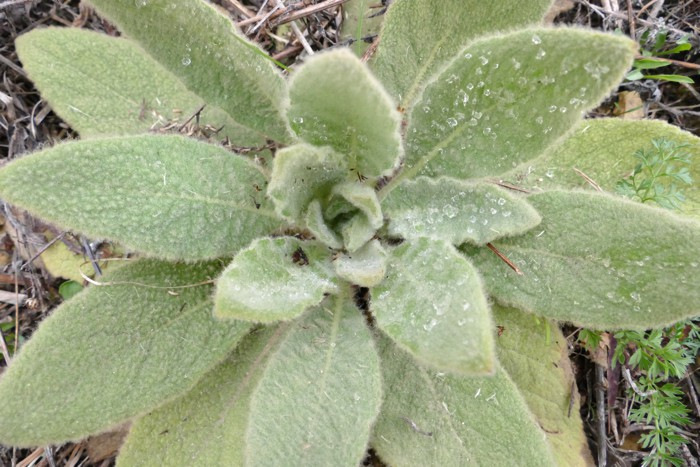Common Mullein is native to Europe, northern Africa, and Asia. It was brought to America, probably in the 1700s, as a medicinal herb and a fish poison. It’s a biennial that grows in dry open places, especially places where the soil has been disturbed. Each plant produces thousands of seeds which remain viable for many years. Here’s a photo of second year mullein plants on our Western Prairie.

Bird use the tall mullein stalks as perches – especially in the prairies. These are Barn Swallows.

The first year Mullein produces a fuzzy rosette of leaves.
The second year it makes a flower stalk, with many blossoms that open for one day each, over the course of a month or two.
Mullein isn’t a huge problem for us – I do try to eliminate it from the more pristine parts of our remnants, and on the planted prairies in places where the stalks get so thick that I worry that none of the natives will be able to grow. Usually, if I get rid of most of the flowering stalks one year, the number of plants decreases dramatically over the next few years.
My main control method for Mullein is to cut the flower stalk and treat the cut surface with 2-4% glyphosate. If it’s early in the season, and the flowers haven’t started blooming, I drop the cut stalks on the ground. If it’s later, I worry that they will spread their seeds, so I collect the cut stalks and add them to the compost pile. The treated plants die within a week or two. (Clipping the stalks without treating is worse than not cutting at all – the plants grow a new flower stalk that has more branches, and more flowers, than the original one.)
Sometimes I come across first year Mullein rosettes that I want to get rid of. I clip off the leaf tips in the center of the circle – to give the herbicide a place to get in – and spray that cut center.

